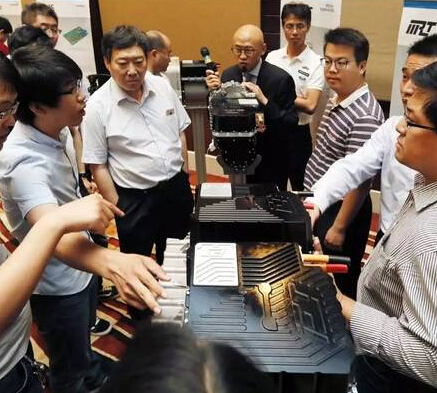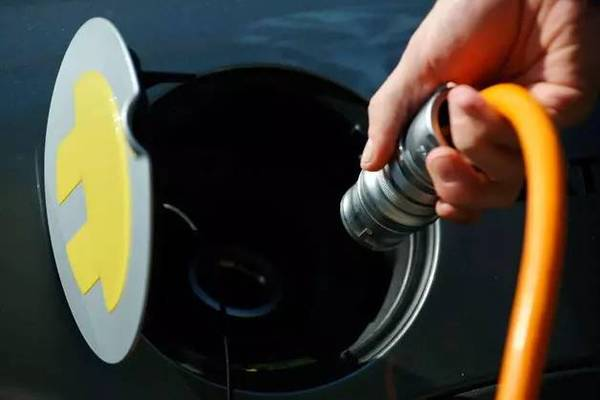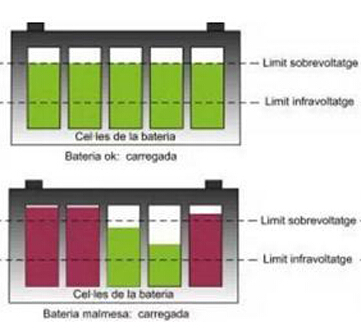Due to the use of lithium batteries in electric vehicles, there is a certain risk of fire. Battery fires are also uncommon. Due to the increased environmental awareness and government support, sales of electric vehicles have increased year by year. Every electric vehicle driver should have a scientific awareness of battery fires. To share with you several stages of lithium battery fire.
1. Overheat warning
Lithium batteries will heat up before they catch fire. Most battery managers in electric vehicles have a temperature detection and alarm function. There is a fault light on the electric vehicle instrument to warn the battery of overheating. The high temperature fault lights of electric vehicles of different brands are different. But basically the background is a battery symbol, plus a warning symbol. If you find that there is such a fault light on the meter, you must go to the 4S shop to detect it as soon as possible. Battery overheating is more likely to occur during fast charging and high temperature in summer. High temperature will trigger the battery management protection mechanism and cut off the high voltage of the vehicle. If your electric car often experiences some inexplicable power outage, then you must pay attention to whether it is caused by battery overheating. of. Battery heat is an important signal before the accident of the power battery. It must be paid enough attention to find and deal with as soon as possible to avoid personal injury and economic loss.
Second, release smoke
When the internal short circuit of the lithium battery has become uncontrollable, the electrolyte is vaporized and decomposed by heat. Eventually, the battery case is broken due to too much pressure. High-pressure gas is ejected from the rupture of the case. The gas quickly diffuses to the weak point of the battery pack. Smoke is visible on the chassis. If you find that there is unknown smoke inside the electric car, you should stop and leave quickly. Generally, the lithium battery has only tens of seconds from the release of the smoke to the fire. The electrolyte vapor and acid gas contained in the smoke are harmful to the human body. A small amount of inhalation will stimulate the respiratory tract mucosa , Large amounts of inhalation can cause poisoning. Therefore, when it is found that the electric car is smoking, it must be quickly away from the incident and waiting for professional fire fighting forces to deal with it.
3. Open flames
When an open fire begins to erupt in the car or the chassis, it means that the power battery of the electric vehicle has completely lost control. The faulty battery has spread the fire to other normal cells. The high temperature quickly destroys the normal battery, and the flammable substances in the battery burn violently and spray flames outward. In the case of an open fire in the battery, personal or professional firefighting can no longer control the situation. Because the fire source is inside the battery pack, there is almost no way to control the fire. The fire department ’s usual practice for electric vehicles is to let them burn and establish isolation The zone prevents the fire from spreading to the surrounding environment and vehicles.

4. Explosion
Explosion is a manifestation of violent combustion. The explosion is caused by the instantaneous explosion of the expanded single-cell lithium battery. The energy generated by the explosion will detonate other expanded single-cell batteries, causing the explosion to intensify and threaten the surrounding vehicles and personnel. Once the battery of an electric car explodes, it means that the electric car is completely scrapped. Battery explosion is the most serious extreme accident of electric vehicles. Objectively speaking, there are far more electric vehicle battery explosion accidents on the market than we have seen from the news. If unfortunately encounter a similar accident, all we need to do is to stay away from the accident on site.
At present, the lithium battery industry has gradually formed a security awareness to increase a firewall, using gas sensors to monitor the fire of lithium batteries. Lithium batteries usually produce a large amount of carbon monoxide before the fire, so monitoring the concentration of CO is undoubtedly an effective solution. With this scheme, the sensitivity and reliability of the CO sensor are usually relatively high. Here, Gongcai recommends a reliable CO sensor TGS5141, which has the advantages of high sensitivity, good reliability and long life. Suitable for fire detection of electric vehicles.
Basic parameters of TGS5141:
Test object: carbon monoxide
Detection range: 0 ~ 5000ppm
Response time: <60s
Life expectancy: 10 years
Temperature range: -20 ~ 70 degrees Celsius
Humidity range: 10 ~ 95% RH (no condensation)
Advantages of TGS5141:
Small size, zero power consumption and long life;
Good selectivity and repeatability for CO;
Good linear output characteristics for CO concentration;
Meet UL2034, EN50291 certification;
TGS5141 has the advantages of small specific volume, low power consumption, long life, etc. It is very suitable for high integration and battery-powered products, not only for lithium battery production and storage environments, but also for new energy vehicles and other product applications
The sensitivity of TGS5141 to CO is very high, and it has strong anti-interference ability to methane, alcohol and other combustible gases, ensuring the accuracy of battery fire detection.
















 RCCN WeChat QrCode
RCCN WeChat QrCode Mobile WebSite
Mobile WebSite







